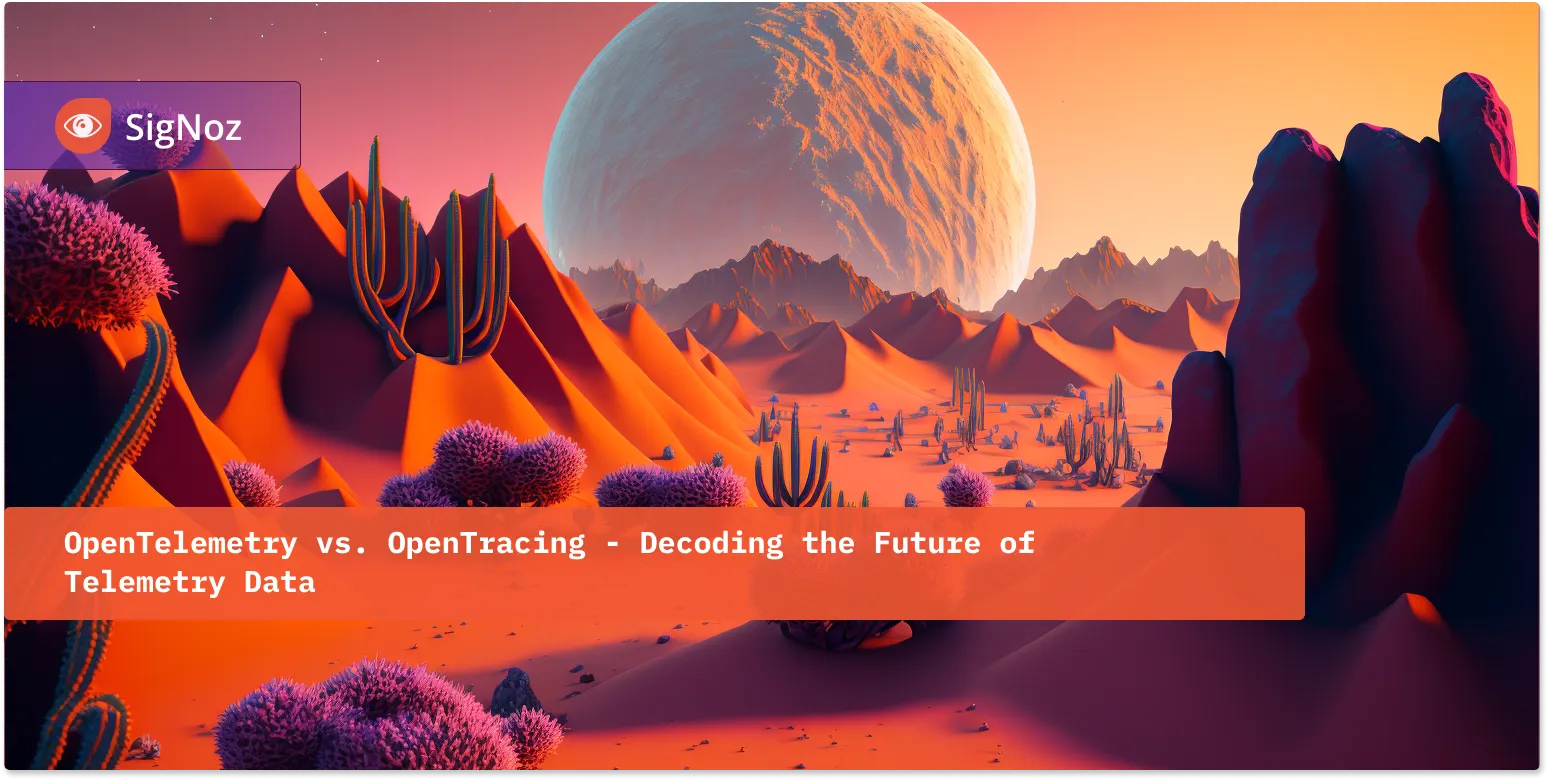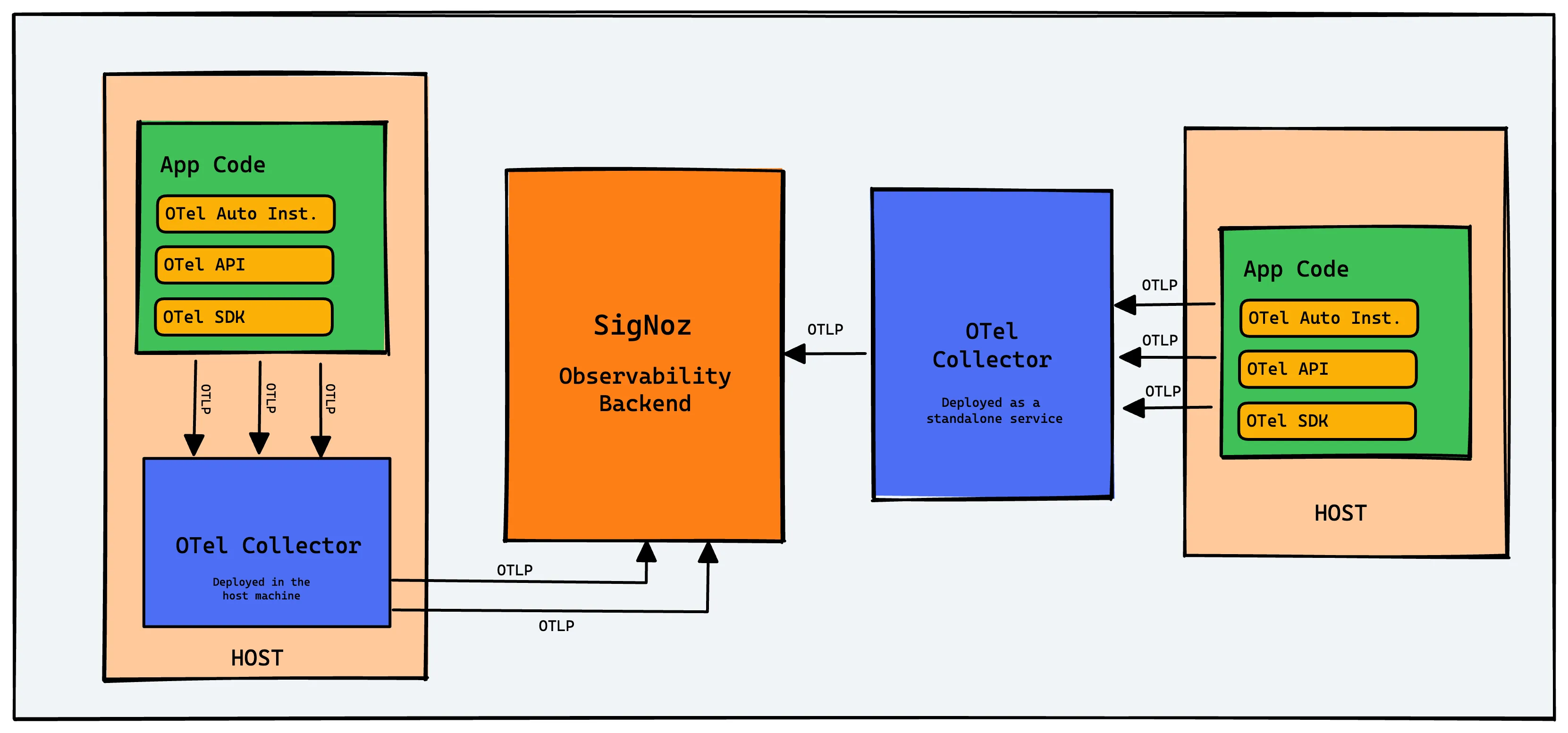OpenTelemetry vs. OpenTracing - Decoding the Future of Telemetry Data
OpenTelemetry and OpenTracing are open-source projects used to instrument application code for generating telemetry data. While OpenTelemetry can help you generate logs, metrics, and traces, OpenTracing focuses on generating traces for distributed applications.

If you’re thinking of choosing between OpenTelemetry and OpenTracing, go for OpenTelemetry. OpenTracing is now deprecated, and users of OpenTracing are advised to migrate to OpenTelemetry.
Before we see the differences between OpenTelemetry and OpenTracing, let’s have a brief overview of what each technology is.
What is OpenTelemetry?
OpenTelemetry is an open-source project under the Cloud Native Computing Foundation(CNCF) that aims to standardize the generation and collection of telemetry data. Telemetry data includes logs, metrics, and traces.It was formed after the merger of OpenTracing and OpenCensus, two projects with similar goals but different approaches.
OpenTelemetry is a collection of APIs, SDKs, and client libraries used to generate telemetry data from your application code. The data you collect with OpenTelemetry is vendor-agnostic and can be exported in many formats.
The biggest advantage of using OpenTelemetry is that you have the freedom to choose a backend of your choice. You don’t get locked into a vendor, and engineering teams can get ramped up on a single technology to generate telemetry data.
Which backend analysis tool to choose?
You can try SigNoz, a full stack open-source APM built natively on OpenTelemetry.
To integrate OpenTelemetry with your application code, you can use the OpenTelemetry client libraries of the required programming language. OpenTelemetry also provides a collector known as OTel(OpenTelemetry) collector that can be used to process and export telemetry data in multiple formats.

What is OpenTracing?
OpenTracing was an open-source project aimed at providing vendor-neutral APIs and instrumentation for [distributed tracing](https://signoz.io/blog/distributed-tracing-in-microservices/). In distributed cloud-native applications, it is difficult for engineering teams to see how requests are performing across services. And that’s where distributed tracing comes into the picture.But the problem for large organizations in adopting distributed tracing was the lack of reusable instrumentation for a vast number of open-source frameworks and libraries.
OpenTracing APIs were meant to solve this by developing a common instrumentation API.
OpenTelemetry vs OpenTracing
OpenTelemetry was formed after the merger of OpenTracing and OpenCensus and is currently being actively developed as the single standard for application instrumentation under CNCF. OpenTelemetry combines the functionalities of OpenTracing and OpenCensus and also extends them.
While OpenTelemetry can be your single source for all kinds of telemetry data like logs, metrics, and traces, OpenTracing was focused only on distributed tracing. For users who are using OpenTracing APIs, they can migrate to OpenTelemetry.
For organizations and developers currently on the fence, the choice is clear: OpenTelemetry. Not only does it encompass the functionalities of OpenTracing, but it also offers extended capabilities. With OpenTracing being deprecated, migrating to OpenTelemetry is the logical step forward. The transition is made easier by OpenTelemetry's active efforts to ensure backward compatibility and its comprehensive approach to telemetry data.
FAQs
Is OpenTelemetry compatible with OpenTracing?
OpenTelemetry is backwards compatible with OpenTracing using software bridges. For example, the OpenTracing bridge will take any OpenTelemetry tracer and convert it into an OpenTracing tracer.
Does Jaeger use OpenTelemetry?
At the moment, Jaeger OpenTelemetry libraries are experimental. Jaeger official website mentions that Jaeger OpenTelemetry binaries are almost backward compatible with the current Jaeger binaries.
SigNoz - An Open Source APM built natively for OpenTelemetry
SigNoz is a full-stack open source APM built natively to support OpenTelemetry. At SigNoz, we believe that OpenTelemetry is going to be the world standard for instrumenting cloud-native applications.
SigNoz supports OpenTelemetry semantic conventions and provides visualization for all three distinct types of signals(log management is under active development) supported by OpenTelemetry.
The steps to send telemetry data to SigNoz involves:
- Instrument application code with language-specific OpenTelemetry libraries
- Configure OpenTelemetry Exporters to send data to SigNoz
- Visualize and analyze telemetry data using SigNoz dashboards
It's very easy to get started with SigNoz. SigNoz cloud is the easiest way to run SigNoz. You can sign up for a free account and get 30 days of unlimited access to all features.
You can also install and self-host SigNoz yourself. It can be installed on macOS or Linux computers in just three steps by using a simple install script.
The install script automatically installs Docker Engine on Linux. However, you must manually install Docker Engine on macOS before running the install script.
git clone -b main https://github.com/SigNoz/signoz.git
cd signoz/deploy/
./install.sh
You can visit our documentation for instructions on how to install SigNoz using Docker Swarm and Helm Charts.


